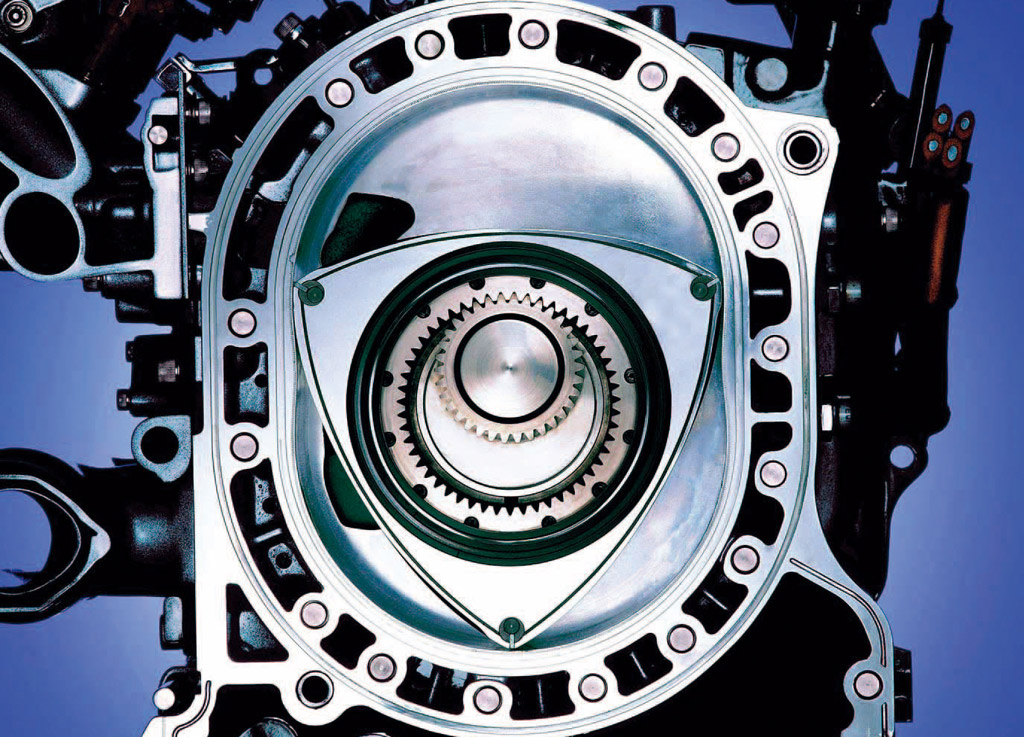Mazda will use Tesla’s North American Charging Standard (NACS) connector for future EVs, but is still investing in development of a new generation of its signature rotary engines.
The automaker announced Tuesday that it would adopt the NACS connector for EVs launched in North America from 2025 onward, and will give customers access to the Tesla Supercharger network. Mazda’s North American EV plans are vague, but a 2023 report indicated the automaker was preparing two EVs for North America, and may build future EVs in Mexico.
Just a few days earlier, Mazda president Katsuhiro Mogo announced at the 2024 Tokyo Auto Salon that the automaker would restart rotary engine development, launching a new development group Feb. 1, Japanese publication Automotive Media Response reported.

Rotary engine
Sports cars like the RX-7 have made the name Mazda synonymous with Wankel rotary engines, which use a triangular spinning rotor instead of a piston to harness the energy of combustion. However, Mazda ended production of conventional rotary engines in 2012.
Since then, the only rotary engine launched by Mazda has been a single-rotor range extender in a version of the MX-30 crossover—which has now been cut from the U.S. lineup.
Other rotary-engine development had ended in 2018, according to the report, which indicated that positive response to the Mazda Iconic SP rotary-engined hybrid sports car concept unveiled last October may have been a factor in the decision to create a new rotary-engine development group.
Mazda Iconic SP concept
The dual announcements of NACS adoption and rotary-engine development are typical of the mixed signals coming out of Mazda for the past few years. In 2022, the automaker said it was targeting 40% EV sales by 2030, on a global scale. But last year Mazda’s U.S. boss said longer-range EVs aren’t the future.
So perhaps Mazda’s future plans include shorter-range EVs sold alongside internal-combustion cars—with perhaps some of those rotary-powered.

